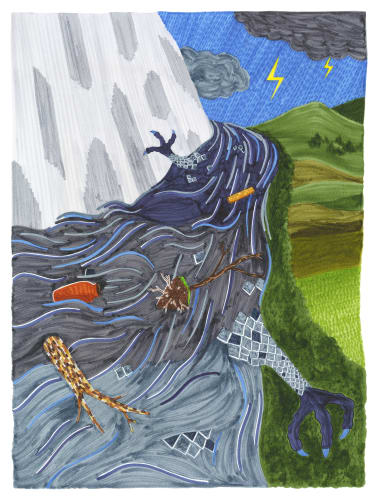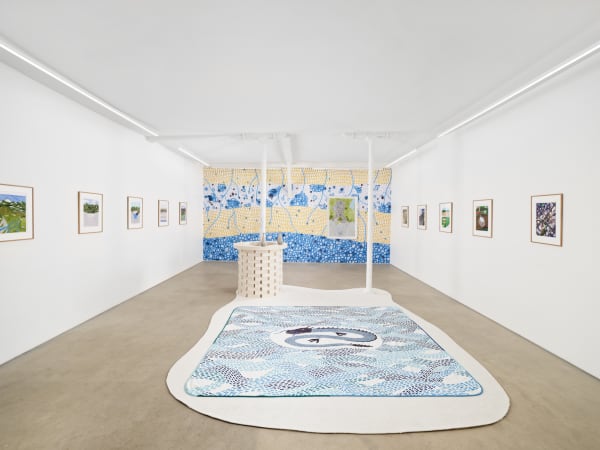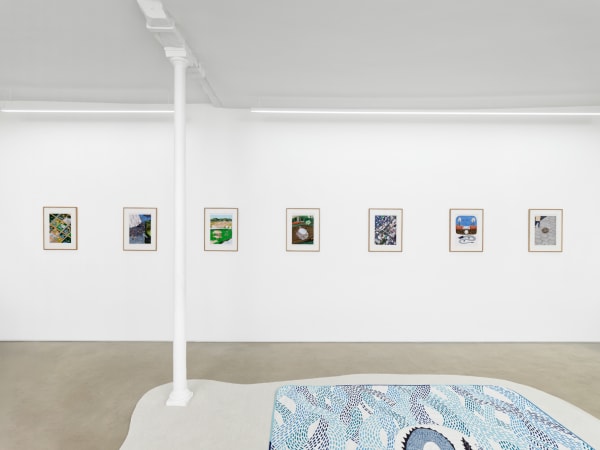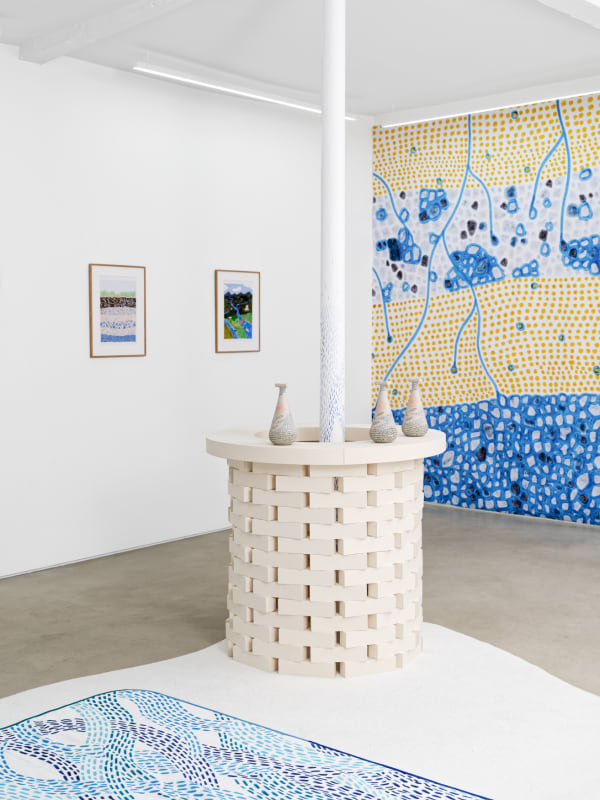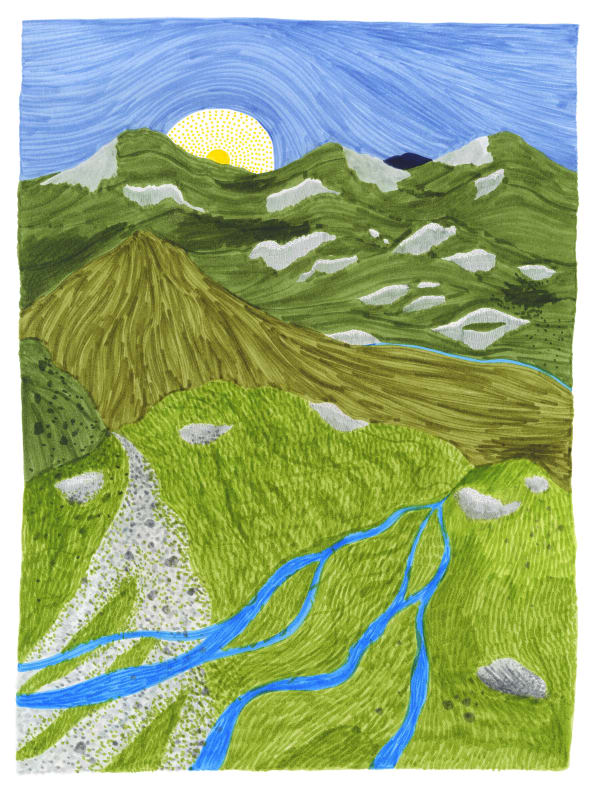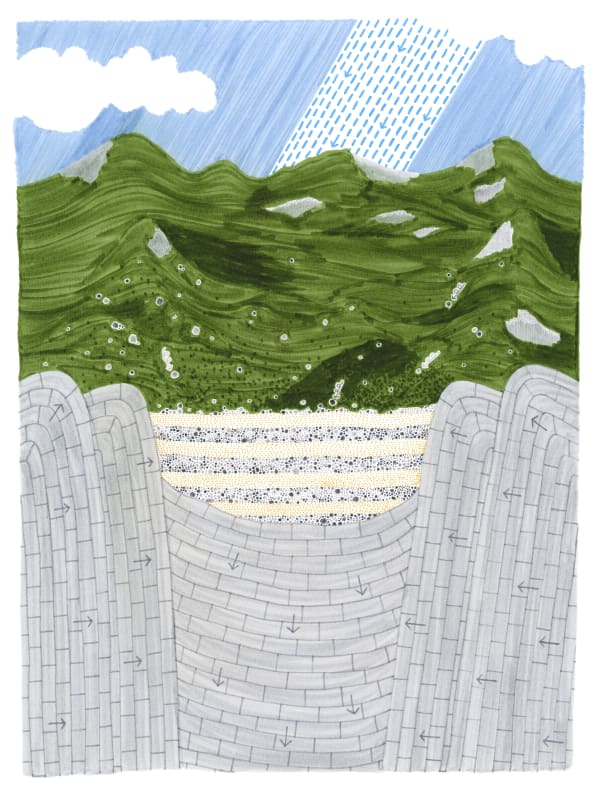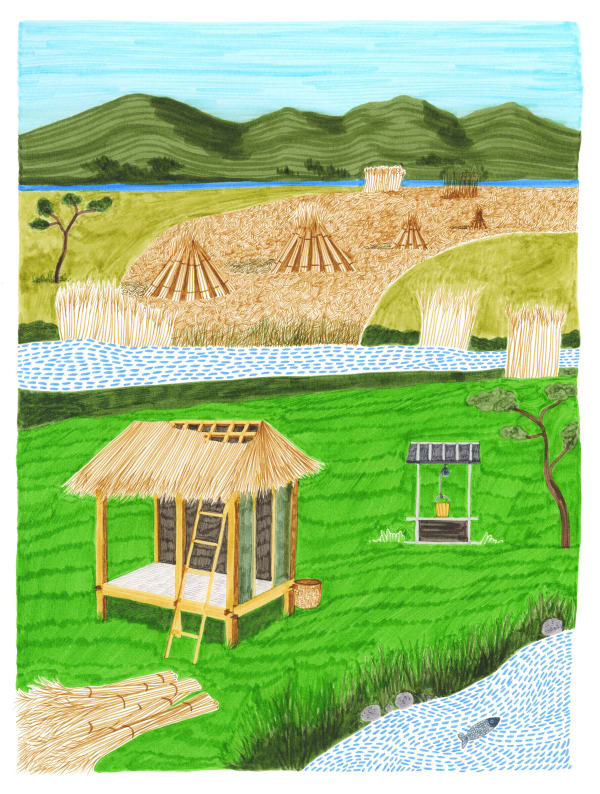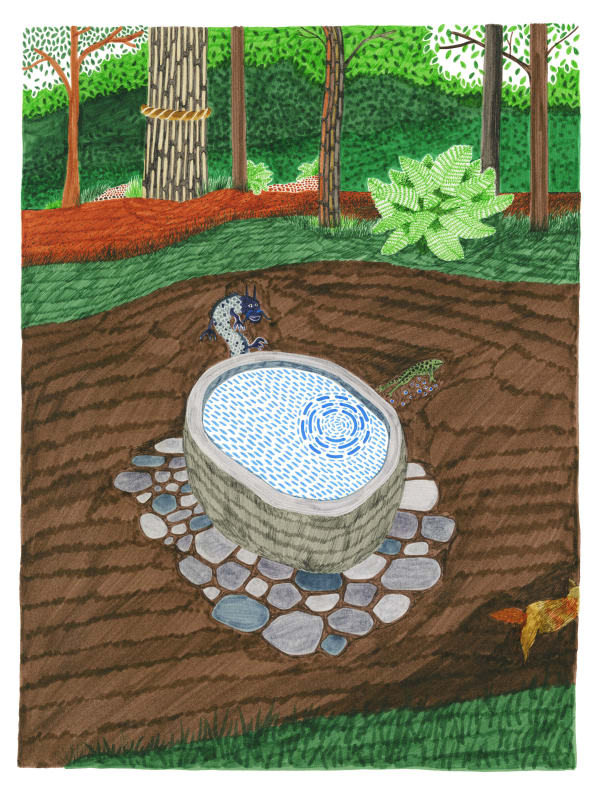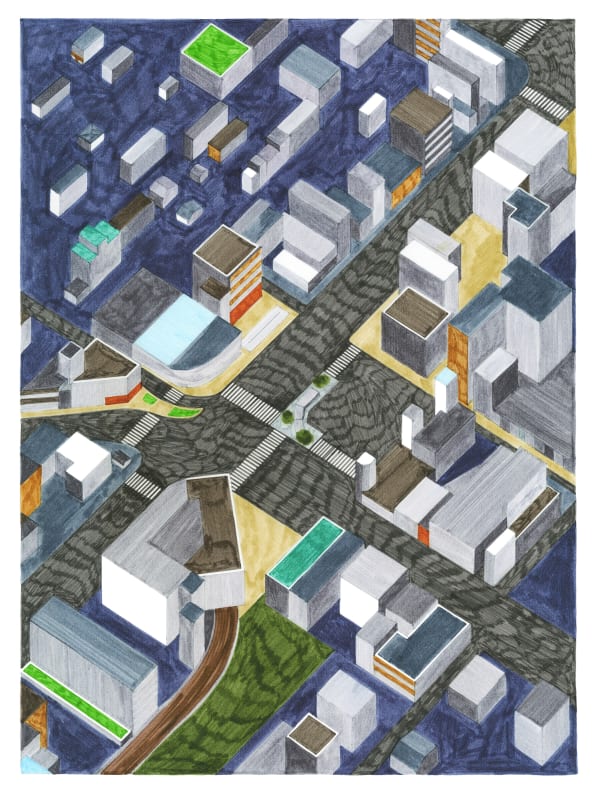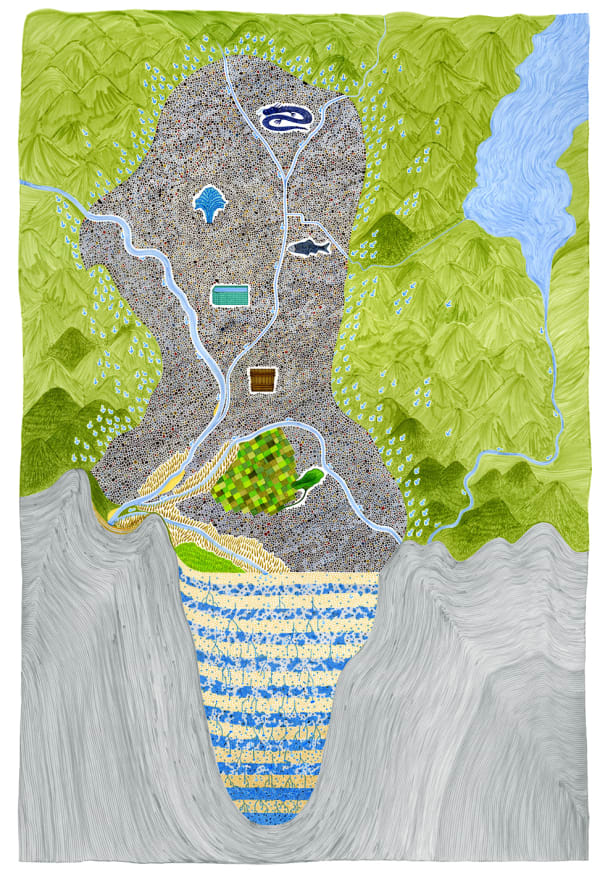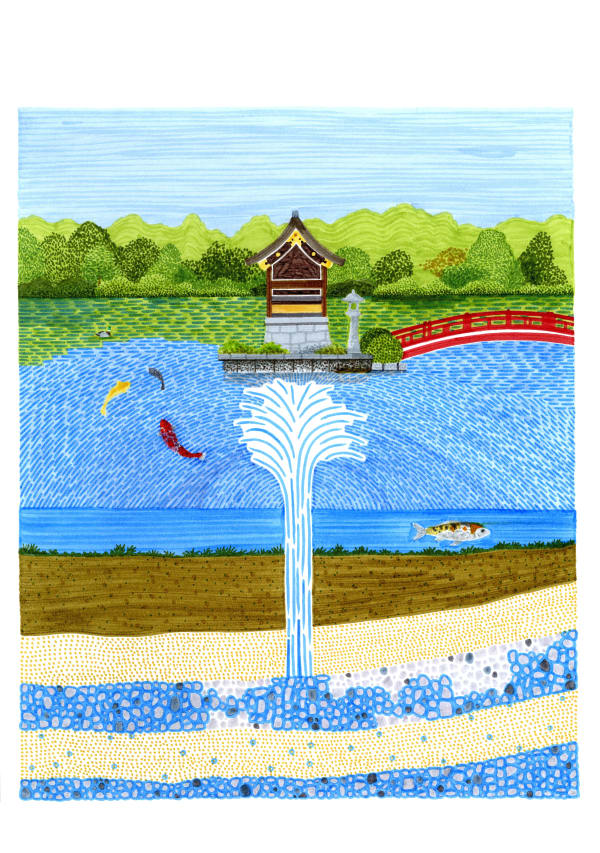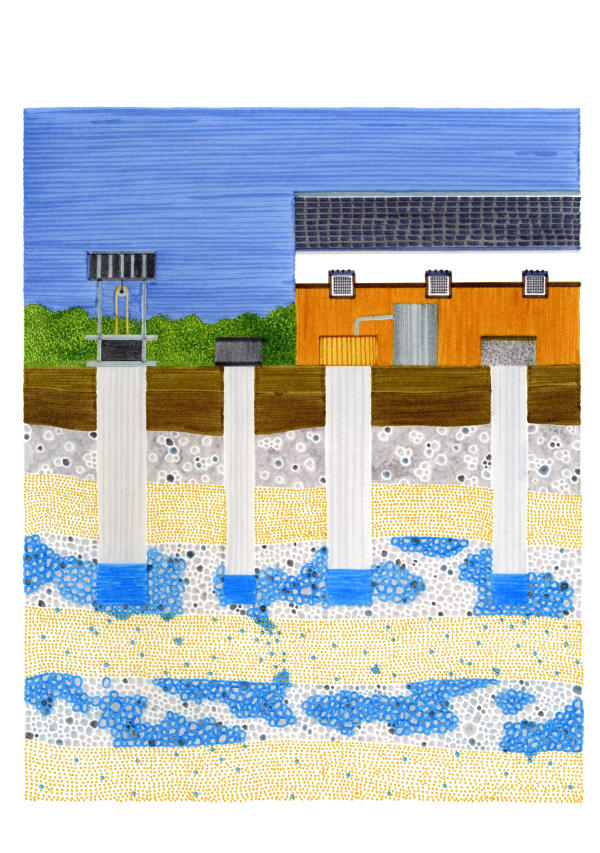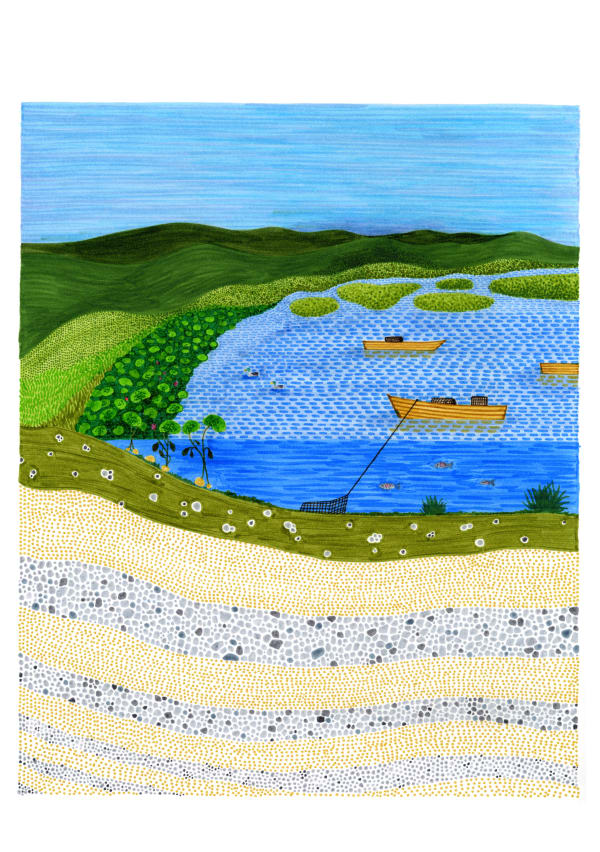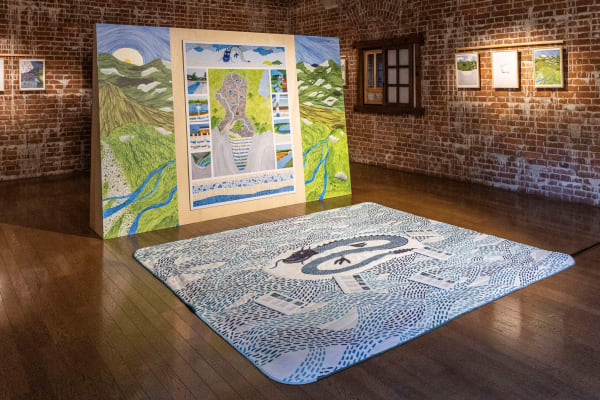WATER CALLING : L’APPEL DE L'EAU: ISABELLE DAËRON
La galerie Pavec est ravie d’annoncer l’exposition personnelle de l’artiste et designer Isabelle Daëron, intitulée Water Calling : l’appel de l’eau, qui se tiendra du 04 au 27 septembre 2025.
L’exposition réunit un ensemble d’œuvres qui plongent le visiteur dans l’univers sensible et mystérieux de la nappe phréatique de Kyoto, révélant un monde enfoui, presque secret.
Depuis 2022, Isabelle Daëron explore les strates géologiques et culturelles de cette ville japonaise, en collaboration avec la commissaire Yoshiko Nagai. Ce projet, à la croisée du dessin, de la recherche et de l'installation, interroge la manière dont les eaux souterraines ont façonné la topographie, les savoir-faire et l’imaginaire collectif de Kyoto depuis l’époque Heian. Comment rendre sensible cette eau invisible, fluide vital enfoui sous la ville, dont le volume équivaut à celui du lac Biwa, le plus vaste du Japon ?
Dans l’espace de la galerie, le visiteur découvrira une série de dessins au feutre, où les lignes, inspirées des relevés géophysiques et des sonorités de l’eau, dessinent une cartographie intime des flux souterrains. Une installation in situ prendra la forme d’un puits, sculptant symboliquement un accès au monde invisible des eaux profondes et invitant à une immersion silencieuse. Parmi les œuvres présentées, les chantepleures, arrosoirs en céramique inspirés d’un modèle médiéval, incarnent un geste simple et poétique de relation à l’eau, entre transmission et usage. Enfin, un tapis, tel un fragment de sol habité, viendra ancrer la mémoire diffuse de l’eau dans la matière.
Water Calling est une exposition comme un murmure souterrain, une tentative de traduire par le dessin et les formes ce que la terre contient de vivant, de fluide et de précieux. Elle témoigne du travail d’Isabelle Daëron, dont la démarche, entre design écologique et narration sensible, s’attache à révéler les dynamiques invisibles du monde. En mêlant art, science et savoirs vernaculaires, cette exposition tisse un dialogue délicat entre la France et le Japon, entre surface et profondeur, entre silence et écoute.
-
 ISABELLE DAËRONSans Titre (DO1), 2023Dessins originaux livre Water CallingFeutre sur papier
ISABELLE DAËRONSans Titre (DO1), 2023Dessins originaux livre Water CallingFeutre sur papier
Felt pen on paper42 x 29,7 cm
16 1/2 x 11 3/4 inCourtesy of Pavec -
 ISABELLE DAËRONSans Titre (DO2), 2023Dessins originaux livre Water CallingFeutre sur papier
ISABELLE DAËRONSans Titre (DO2), 2023Dessins originaux livre Water CallingFeutre sur papier
Felt pen on paper42 x 29,7 cm
16 1/2 x 11 3/4 inCourtesy of Pavec -
 ISABELLE DAËRONSans Titre (DO5) , 2023Dessins originaux livre Water CallingFeutre sur papier
ISABELLE DAËRONSans Titre (DO5) , 2023Dessins originaux livre Water CallingFeutre sur papier
Felt pen on paper42 x 29,7 cm
16 1/2 x 11 3/4 inCourtesy of Pavec -
 ISABELLE DAËRONSans Titre (DO6), 2023Dessins originaux livre Water CallingFeutre sur papier
ISABELLE DAËRONSans Titre (DO6), 2023Dessins originaux livre Water CallingFeutre sur papier
Felt pen on paper42 x 29,7 cm
16 1/2 x 11 3/4 inCourtesy of Pavec -
 ISABELLE DAËRONSans Titre (DO7), 2023Dessins originaux livre Water CallingFeutre sur papier
ISABELLE DAËRONSans Titre (DO7), 2023Dessins originaux livre Water CallingFeutre sur papier
Felt pen on paper42 x 29,7 cm
16 1/2 x 11 3/4 inCourtesy of Pavec -
 ISABELLE DAËRONSans Titre (DO9), 2023Dessins originaux livre Water CallingFeutre sur papier
ISABELLE DAËRONSans Titre (DO9), 2023Dessins originaux livre Water CallingFeutre sur papier
Felt pen on paper42 x 29,7 cm
16 1/2 x 11 3/4 inCourtesy of Pavec -
 ISABELLE DAËRONSans Titre (DO11), 2023Dessins originaux livre Water CallingFeutre sur papier
ISABELLE DAËRONSans Titre (DO11), 2023Dessins originaux livre Water CallingFeutre sur papier
Felt pen on paper42 x 29,7 cm
16 1/2 x 11 3/4 inCourtesy of Pavec -
 ISABELLE DAËRONSans Titre (DO12), 2023Dessins originaux livre Water CallingFeutre sur papier
ISABELLE DAËRONSans Titre (DO12), 2023Dessins originaux livre Water CallingFeutre sur papier
Felt pen on paper42 x 29,7 cm
16 1/2 x 11 3/4 inCourtesy of Pavec -
 ISABELLE DAËRONSans Titre (DO14), 2023Dessins originaux livre Water CallingFeutre sur papier
ISABELLE DAËRONSans Titre (DO14), 2023Dessins originaux livre Water CallingFeutre sur papier
Felt pen on paper42 x 29,7 cm
16 1/2 x 11 3/4 inCourtesy of Pavec -
 ISABELLE DAËRONSans Titre (DO15), 2023Dessins originaux livre Water CallingFeutre sur papier
ISABELLE DAËRONSans Titre (DO15), 2023Dessins originaux livre Water CallingFeutre sur papier
Felt pen on paper42 x 29,7 cm
16 1/2 x 11 3/4 inCourtesy of Pavec -
 ISABELLE DAËRONSans Titre (DO19), 2023Dessins originaux livre Water CallingFeutre sur papier
ISABELLE DAËRONSans Titre (DO19), 2023Dessins originaux livre Water CallingFeutre sur papier
Felt pen on paper42 x 29,7 cm
16 1/2 x 11 3/4 inCourtesy of Pavec -
 ISABELLE DAËRONSans Titre (DO18), 2023Dessins originaux livre Water CallingFeutre sur papier
ISABELLE DAËRONSans Titre (DO18), 2023Dessins originaux livre Water CallingFeutre sur papier
Felt pen on paper42 x 29,7 cm
16 1/2 x 11 3/4 inCourtesy of Pavec -
 ISABELLE DAËRONKyoto Basin, 2024Dessin original carte Water CallingFeutre sur papier
ISABELLE DAËRONKyoto Basin, 2024Dessin original carte Water CallingFeutre sur papier
Felt pen on paper127,1 x 89,4 cm
50 x 35 1/4 inCourtesy of Pavec -
 ISABELLE DAËRONShinsen-en, 2024Dessin original carte Water CallingFeutre sur papier
ISABELLE DAËRONShinsen-en, 2024Dessin original carte Water CallingFeutre sur papier
Felt pen on paper42 x 29,7 cm
16 1/2 x 11 3/4 inCourtesy of Pavec -
 ISABELLE DAËRONFushimi, 2024Dessin original carte Water CallingFeutre sur papier
ISABELLE DAËRONFushimi, 2024Dessin original carte Water CallingFeutre sur papier
Felt pen on paper42 x 29,7 cm
16 1/2 x 11 3/4 inCourtesy of Pavec -
 ISABELLE DAËRONSento, 2024dessin original carte Water CallingFeutre sur papier
ISABELLE DAËRONSento, 2024dessin original carte Water CallingFeutre sur papier
Felt pen on paper42 x 29,7 cm
16 1/2 x 11 3/4 inCourtesy of Pavec -
 ISABELLE DAËRONOgura-ike, 2024Dessin original carte Water CallingFeutre sur papier
ISABELLE DAËRONOgura-ike, 2024Dessin original carte Water CallingFeutre sur papier
Felt pen on paper42 x 29,7 cm
16 1/2 x 11 3/4 inCourtesy of Pavec -
 ISABELLE DAËRONMurin-an, 2024dessin original carte Water CallingFeutre sur papier
ISABELLE DAËRONMurin-an, 2024dessin original carte Water CallingFeutre sur papier
Felt pen on paper42 x 29,7 cm
16 1/2 x 11 3/4 inCourtesy of Pavec -
 ISABELLE DAËRONWater Calling - tapis, 2024Réalisé avec Kione KochiTextile imprimé et matelassé
ISABELLE DAËRONWater Calling - tapis, 2024Réalisé avec Kione KochiTextile imprimé et matelassé
Printed and quilted fabric255 x 215 cm
100 3/8 x 84 5/8 inCourtesy of PavecCopyright The Artist -
 ISABELLE DAËRONChantepleure (1), 2025Grès et engobe25 x 12 x 12 cm
ISABELLE DAËRONChantepleure (1), 2025Grès et engobe25 x 12 x 12 cm
9 7/8 x 4 3/4 x 4 3/4 inCourtesy of PavecCopyright The Artist
